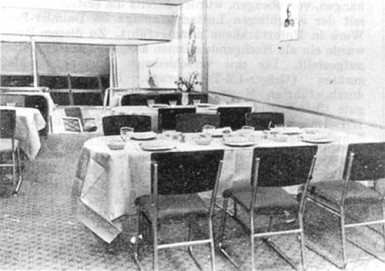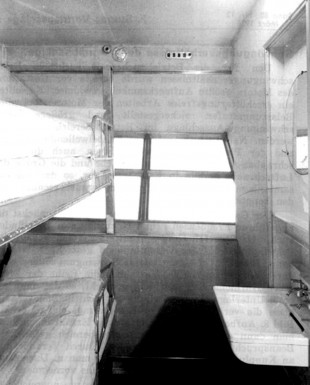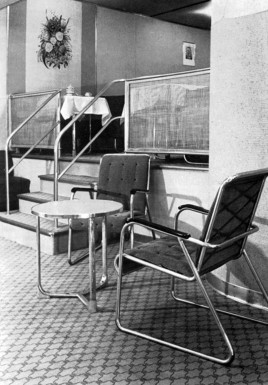LZ-130 — named Graf Zeppelin — was the last large rigid airship ever built.
Built from essentially the same blueprints as her sister ship, LZ-129 Hindenburg, LZ-130 was nearing completion at the time of the Hindenburg disaster on May 6, 1937. Originally intended to join Hindenburg in transatlantic service in October, 1937, LZ-130 was modified to use helium after the Hindenburg crash, delaying her first flight.
Because helium provides less lift than hydrogen, LZ-130’s passenger capacity was reduced from the 72 carried by Hindenburg to just 40, and because helium was expensive and difficult to obtain, modifications were required to avoid the need to release helium during normal operations; the engine cars greatly enlarged to accommodate equipment to recover water from exhaust gases, with tractor propellers (facing forward) rather than the pusher propellers on Hindenburg.

 After the fiery crash of Hindenburg it seemed likely that the United States, which had a practical monopoly on helium, would lift its 1927 export restriction and allow German passenger airships to use the nonflammable gas, but with the increasing aggression of the National Socialist government in 1938, including the annexation of Austria and the occupation of Sudeten Czechoslovakia, the American government would not allow the exportation of helium to Germany. LZ-130 spent her short career inflated with hydrogen and never carried a paying passenger.
After the fiery crash of Hindenburg it seemed likely that the United States, which had a practical monopoly on helium, would lift its 1927 export restriction and allow German passenger airships to use the nonflammable gas, but with the increasing aggression of the National Socialist government in 1938, including the annexation of Austria and the occupation of Sudeten Czechoslovakia, the American government would not allow the exportation of helium to Germany. LZ-130 spent her short career inflated with hydrogen and never carried a paying passenger.
Graf Zeppelin made her first flight on September 14, 1938, under the command of Hugo Eckener, and made a total of 30 flights during her two year career. In addition to propaganda flights over Germany, German-annexed Austria, and German-occupied Sudetenland, LZ-130 conducted multiple military reconnaisance flights including a two-day flight in August, 1939, dedicated to electronic surveillance of Britain’s Chain Home radar network.

LZ-130 Dining Room
LZ-130’s last flight took place on August 20, 1939; twelve days later Germany invaded Poland, beginning World War II, and the ship never flew again. In March, 1940, Luftwaffe commander Hermann Goring ordered the dismantling of LZ-127, LZ-130, and LZ-131, which was then under construction, and by late April the ships had been cut into scrap. On May 6, 1940 — the third anniversary of the Hindenburg disaster — Wehrmacht demolition specialists destroyed the Zeppelin Company hangars in Frankfurt.





Where was cargo stored on a zeppelin?
Usually along the keel.
Was Oskar Fink the navigator on the 130
I like the fact the helium supply was cut off by the US. But today, imagine today’s political leaders. They’re so clueless, and would think selling helium or any commodity to an enemy is fine. They’d be like, okay, and buy some of my son’s paintings.
I was going through my Dad’s things today and found a German book about the Graf Zeppelin and original newspapers 1929. There is also a postcard that was addressed to the Swiss Consul. I would love to find someone that might be interested in these things.
I am, contact me at ken_gibson@rocketmail.com
Prezados senhores embora lento para os tempos de hoje seria louvável a reconstrução de uma nave como esta com os novos materiais que o mundo hoje dispoem
Ola,sim,eu adora este typo de Aeronave!o Zeppelin fui uma construçao muit legal,hoje tem aqui na Europa umas pequenas Zeppelins para passear com Touristas!
There is an angle that has not been pointed out on how one decision could almost backfire disasterously.If General Martini had been successful with his experiments in detecting the British Radar Chain using the Graf Zeppelin 2 and the germans were able to take advantage of the information and exploit… Read more »
Provided that LZ 129 would not have been destroyed in May 1937 the plan was that LZ 130 should make it´s maiden voyage to Rio in late October 1937. That would mean that LZ 127 would also still be in Operation, so that LZ 130 could not get the Name… Read more »
Graf Zeppelin – LZ-127 – was slated for retirement as a training ship shortly after LZ-130 came online. This would have avoided any confusion in names.
I have recently read Hans von Schiller´s book “Zeppelinbuch 1938”. He described there in detail the situation of the DZR in winter 1936/37. The LZ 127 was technically revised and it was deciced to stay in service for another 3 years. The DZR expected LZ 130 to have it´s first… Read more »
There is at least one image of a large swath of fabric hanging on the Luftschiffbau-Zeppelin hangar wall bearing the name “Graf Zeppelin 2,” although it was obviously never installed on the ship.
The joke I always figured was that the LZ-130 could have been named the Ludendorff after the WW 1 German General.My thinking of this and I am not really being serious is that Field Marshal Von Hindenburg and Erich Ludendorff worked hand in hand during the war especially at the… Read more »
The unnamed LZ-131, on which work had just commenced in late 1939 and would never progress further than the single a main hull ring completed before the scrapping order came down in 1940, was to be named “Peter Strasser” according to longstanding speculation and rumor. However, there is no known… Read more »
Adolf Hitler comes to mind.
Blueprint of the nose here: http://lh4.ggpht.com/-Sh9LH2YujLk/Um_X97TxGyI/AAAAAAAACjo/yFcvFQvnWQQ/s1600-h/LZ%252520129-LZ%252520130%252520bow%252520blueprint%25255B4%25255D.jpg
I would like to add a help to many in the comments box-one person mentions Harold Dick who wrote a book on his five year time living in Germany before the war started. Two Goodyear engineers lived in Germany, one returned to Goodyear after one year and Harold stayed in… Read more »
Airship or Zeppelin are the correct terms. A blimp is a non-rigid design.
While this is technically correct, to specify for clarity, only the 119 rigid airships constructed by Luftschiffbau Zeppelin, GmbH at Friedrichshafen, or at one of its WW I satellite factories of Staaken, Potsdam or Löwenthal, can and should be identified as “Zeppelins” The 20 wooden hulled ships constructed by their… Read more »
I emailed the original Zeppelin company in Germany about building the LZ130 and he responded with this: Dear nevans, unfortunately the rebuild cost of the LZ 130 will be more than significant. The original design and all the construction plans of the LZ 130 are obsolet, because today we are… Read more »